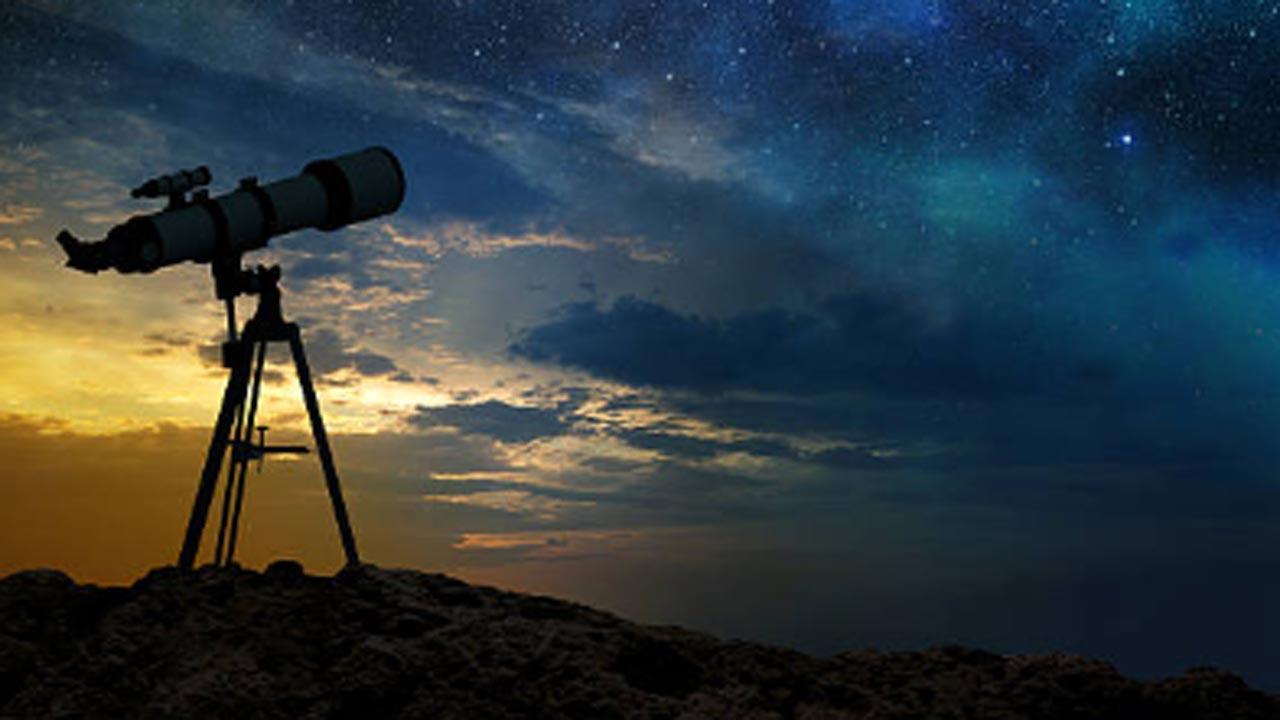"All the mirrors and other components are made of highly specialised 'zero thermal expansion glass" to prevent blurred images owing to temperature fluctuations. The telescope will be supported by an 'Extreme Adaptive Optics' system to reduce disturbances caused by the Earth's atmosphere, as it tracks different celestial objects," said Deshmukh

Representational image. Pic/iStock
In a thrilling astronomical development, the world's largest "eye on the universe" -- an Optical, Infra-red, Thirty Metre Telescope (TMT) -- is fast coming up with critical help from Indian scientists, engineers and industries at its proposed location in Maunakea in US' Hawaii.
The TMT will be the most gigantic scope ever to be constructed by the world at a cost of over $2.6 billion, with collaboration of India, US, Japan, Canada and China, said Dr. Prasanna Deshmukh, 35, one of the scientists engaged in the mega-project.
Hailing from Maharashtra's Sangli, Deshmukh is the work package manager for TMT's Primary Mirror Control System, and handling the crucial Actuators and Edge Sensors for the telescope.
The TMT's Indian collaborators are: the Inter-University Centre for Astronomy & Astrophysics (IUCAA), Pune, the Indian Institute of Astrophysics (IIA), Bengaluru, and the Aryabhat Research Institute of Observational Sciences (ARIES), Nainital.
Deshmukh - of the IIA - said that the TMT will comprise 492 pieces of hexagon mirrors which will be put together and aligned with super-high-precision to pore into the farthest or deepest corners of the known Universe.
"The TMT will enable us to peek from one Light Year (in our Solar System) to the early Universe, or around 13.7 billion Light Years (LY) away. Consider - The nearest neighbour of our Milky Way Galaxy, the Andromeda Galaxy is some 25.3 Lakh LYs away. So imagine the power and reach of the TMT," Deshmukh said in a chat with IANS.
Presently, the two biggest telescopes - both space-based - are the Hubble Space Telescope (diameter 2.5 metres, 1990, 535 km above Earth) and the latest James Webb Space Telescope (diameter 6.5 metres, 2021, to be around 15 lakh km far from Earth, orbiting the Sun), considerably smaller compared with the upcoming ground-based TMT which will be five times bigger with a diameter of 30 metres.
Through the TMT, scientists will get a better view of planets, stars, galaxies, exo-planets, nebulas, supernovas or pulsars, in unthinkable far-off regions of the seemingly endless Universe, conduct spectroscopy of such heavy objects to study their atmosphere, find out if life exists or can thrive there, scout possibility of a future "cool address" for earthlings, and test out the current varied hypotheses on the reality of aliens somewhere, out there...
With the current generation scopes working in optical, ultraviolet or infrared wavelengths, it's not possible to view many things due to their limited size and resolution, but the TMT will open up hitherto unknown avenues to understanding the secrets and mysterious spectacles of the vast Universe, the true dimensions of which still elude man, said Deshmukh.
On how astronomical distances are measured in the Universe (1 LY = 9 trillion kms), Deshmukh said scientists study and analyse the sources of the light for their intrinsic brightness ("standard candle" method) or shift in their spectrum ("red shift" method), to determine that object and its approximate distance from Earth or Solar System.
"TMT will help us study all known astronomical problems or challenges that were stuck owing to the lack of powerful telescopes. Plus, TMT has a life-span of 50 years, giving us sufficient time before something more advanced comes up, maybe to peer even beyond Time itself!" Dr Deshmukh said.
Explaining the TMT, he said the primary mirror will comprise 492 hexagon mirrors supported by another 1,476 actuators, 2,772 high-precision edge sensors, and 10,332 smaller actuators that will align all the mirrors, detect the micro-minutest deviations and correct them to enable get clear images from staggering distances in the Universe.
"All the mirrors and other components are made of highly specialised 'zero thermal expansion glass" to prevent blurred images owing to temperature fluctuations. The telescope will be supported by an 'Extreme Adaptive Optics' system to reduce disturbances caused by the Earth's atmosphere, as it tracks different celestial objects," said Deshmukh.
Incidentally, the Andromeda cluster was first discovered and described by the Persian astronomer Abd Al-Rehman Al Sufi in CE 905.
But it was only over a 1,000 years later (in 1924) that the American astronomer Edwin Hubble (1889-1953) stunned humanity by confirming that Andromeda was indeed a galaxy and our Milky Way is just one of many galaxies dotting the dark Universe.
However, post-1990, the world went into a tizzy as the Hubble Space Telescope discovered billions of new galaxies scattered in the Universe, with more discoveries expected from the James Webb Space Telescope and mind-boggling possibilities likely through the TMT.
Besides IUCAA, IIA and ARIES, some 50-plus Indian industries are contributing to the mega-venture through different components and the direct or indirect involvement of around 200 scientists, engineers, experts, technicians, and others.
One such company, the India TMT Optics Fabrication Facility (ITOFF), near Bengaluru, became operational in January 2021, and it will manufacture 84 (of the 492) mirrors for TMT.
"These mirrors are highly advanced... Each mirror can take up to two-three weeks to manufacture, so it will take around four years to build all (84) mirrors here, plus the others which are being produced in the US, China and Japan," said Deshmukh.
As per current plans, the TMT will "open its eye" to ogle at the Universe by 2032 - the deadline extended from the original 2028.
Also Read: Google Voice rolls out new feature, auto switches between Wi-Fi and cellular data
This story has been sourced from a third party syndicated feed, agencies. Mid-day accepts no responsibility or liability for its dependability, trustworthiness, reliability and data of the text. Mid-day management/mid-day.com reserves the sole right to alter, delete or remove (without notice) the content in its absolute discretion for any reason whatsoever
 Subscribe today by clicking the link and stay updated with the latest news!" Click here!
Subscribe today by clicking the link and stay updated with the latest news!" Click here!










